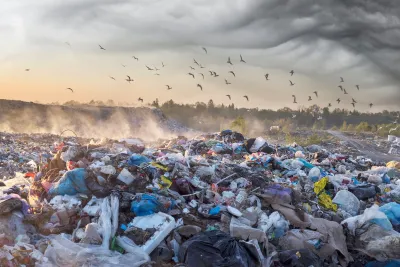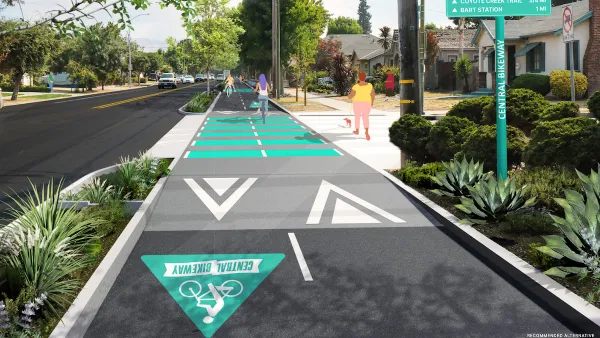Landfills are the third-largest source of methane pollution in Colorado, after agriculture and fossil fuel extraction.

Colorado’s landfills are the third-largest source of methane gas pollution in the state, reports Jennifer Oldham for Colorado Newsline, emitting the equivalent of 1 million gas-powered cars’ worth of methane — a greenhouse gas 80 times as potent as carbon dioxide that also poses a threat to public health.
Now, a proposal to revise the state’s methane regulations would require dump operators to monitor and address methane emissions. “It also addresses loopholes in federal law that allow waste to sit for five years before such systems are required — even though science has shown that half of all food waste decays within about three-and-a-half years.”
The new rules would ban burning emissions directly into the air and mandate biocovers and biofilters to break down gases prior to their release. “The 70-page draft also calls for more routine and thorough monitoring of a dump surface with advanced technologies like satellites, which recently recorded large plumes of methane escaping from a Denver-area landfill.” Experts warn that methane emissions are likely much higher than EPA estimates due to infrequent inspections of facilities.
Some county officials have expressed concern about the cost of complying with the proposed rules, while others embrace the opportunity to make landfills cleaner and more sustainable. “State health officials suggested municipalities could offset the costs of installing gas collection systems at disposal sites by converting methane into energy,” a practice already in use at several Colorado facilities.
FULL STORY: Colorado’s landfills generate as much dirty air as driving 1 million cars for a year

Planetizen Federal Action Tracker
A weekly monitor of how Trump’s orders and actions are impacting planners and planning in America.

Silicon Valley ‘Bike Superhighway’ Awarded $14M State Grant
A Caltrans grant brings the 10-mile Central Bikeway project connecting Santa Clara and East San Jose closer to fruition.

Amtrak Cutting Jobs, Funding to High-Speed Rail
The agency plans to cut 10 percent of its workforce and has confirmed it will not fund new high-speed rail projects.

Planting for Change: How Trees Are Powering Climate Action
"Combating Climate Change with Trees" highlights how Southern California communities are strategically planting and nurturing urban forests to cool neighborhoods, improve air quality, and advance environmental justice.

Could Planners Adopt a 'Place Sherpa' Role?
Building upon the framework of a local housing panel, Chuck Wolfe suggests that advocacy and policy discussions would be enhanced by a “sherpa mindset” that focuses on lived experiences, facilitates applied knowledge of urban places, and promotes stakeholder discussion.

California Advances Its 30x30 Conservation Goals
California is making significant progress toward its 30x30 conservation goals, but looming federal rollbacks and gaps in biodiversity protections could threaten the state’s efforts to protect lands and coastal waters by 2030.
Urban Design for Planners 1: Software Tools
This six-course series explores essential urban design concepts using open source software and equips planners with the tools they need to participate fully in the urban design process.
Planning for Universal Design
Learn the tools for implementing Universal Design in planning regulations.
Caltrans
City of Fort Worth
Mpact (founded as Rail~Volution)
City of Camden Redevelopment Agency
City of Astoria
City of Portland
City of Laramie





























